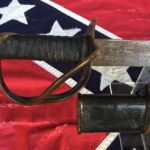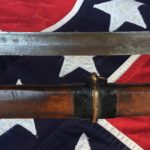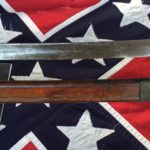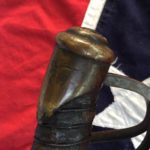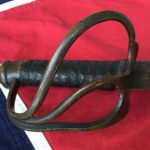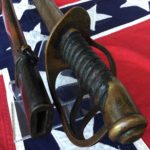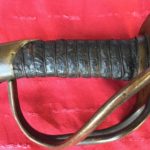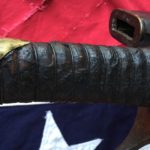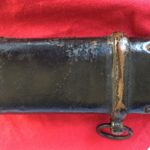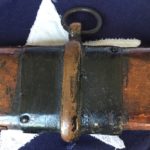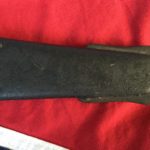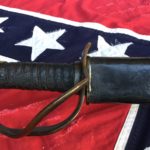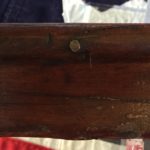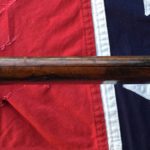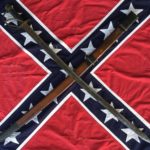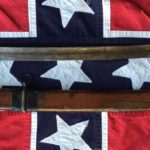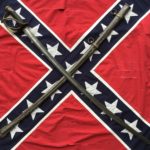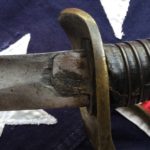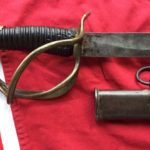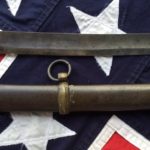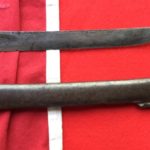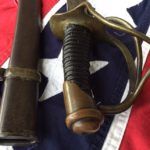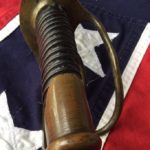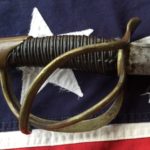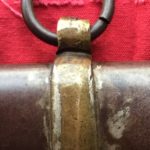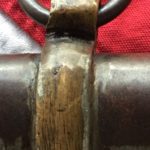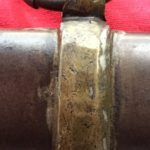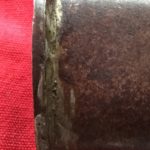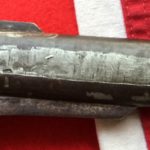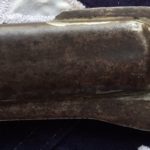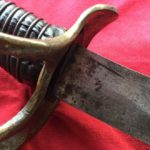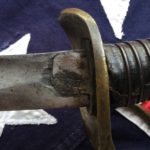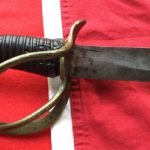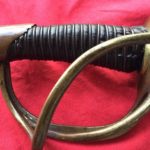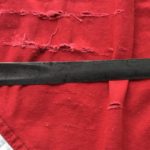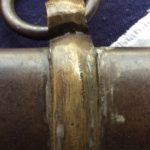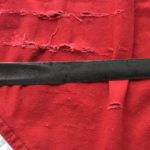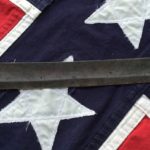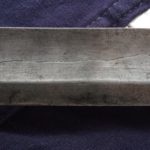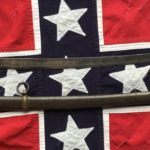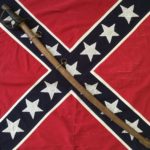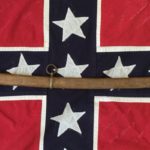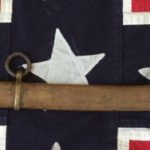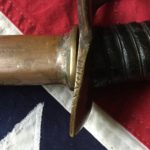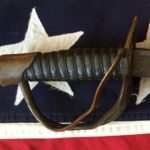- Kraft, Goldschmidt & Kraft Guard
- Kraft, Goldschmidt & Kraft Large Fuller, Scabbard
- Kraft, Goldschmidt & Kraft Saber Tip, Drag
- Kraft, Goldschmidt & Kraft Cavalry Saber Pommel
- Confederate Cavalry Saber, Branches
- Kraft, Goldschmidt & Kraft Cavalry Sword Quillon & Ferrule
- Southern Cavalry Saber, Guard & Grip
- Kraft, Goldschmidt & Kraft Pommel, Branches, Quillon
- Kraft, Goldschmidt & Kraft Saber, Single Wire Wrap Grip
- Wooden Scabbard Made By Lewis L. & T.R. Moore – Throat, Mount & Ring
- Wooden Scabbard Mount & Ring
- Wooden Scabbard Drag
- Kraft, Goldschmidt & Kraft Cavalry Saber – Wooden Scabbard
- Brass Rivet/Nail Holding Scabbard Together
- Wooden Scabbard – Two Piece Seam
- Kraft, Goldschmidt & Kraft Calvary Saber
- Kraft Goldschmidt & Kraft Saber, Wooden Scabbard
Little is known about the wooden scabbards these Cavalry Sabers are housed in. It’s believed they were made by Lewis L. and T.R. Moore of Atlanta Georgia. In Gordon Jone’s book “Confederate Odyssey” he writes that 556 “wooden saber scabbards”were delivered to the C.S. Arsenal at Charleston South Carolina in 1863. So it’s assumed this is one of those wooden scabbards made by the Moore brothers and yes there may have been additional deliveries to the 556 mentioned earlier.
This highly desirable cavalry saber and wooden scabbard serves as testament to the South’s inequality to the North’s industrial revolution, wooden scabbards may have owed as much to practicality as to desperation, thin inferior wrapped leather, small gauge single wire used on the grip, casting flaws on knucklebow and forging flaws throughout the blade. All the qualities that collectors of Confederate weapons love to study.
My new saber and scabbard is just one of my recent acquisitions, it’s been on my wish list for a while and I was able to negotiate a fair price with the seller. The saber measures a total of 39 ½” from pommel to the blade tip with the blade length of 34 ¼”. The blade has a large fuller approximately 27” long with many forging flaws. The brass knucklebow, branches and pommel all have casting flaws and the finest aged patina.
The scabbard measures a total of 36 ¾” from the throat to the bottom of the drag. It’s a testament to the craftsman who made these scabbards, that more then 150 years later they still serve the purpose they were designed for. The wooden scabbard has lots of aged patina only complimenting its history, however it does have some cracks towards the bottom half and I believe the boot style drag has been professionally replaced which does not distract from its character. The scabbard is two pieces of hollowed out carved wood held together with wrapped tin. The throat, ring bands and drag are brass with the darkest hues of brown, red and gold.
This sword and scabbard is typical of so many Southern Weapons that tell a side story of ingenuity, practicality and even desperation……maybe that’s just one of the things that fascinates me and other collectors. I’m thrilled to be the keeper of this piece of American history even if it’s only for a short while.
I’m always looking for new to the market Confederate artifacts, if you have any and are considering selling them maybe we can make a deal. Thanks for stopping by the Civil War Arsenal if you have any questions or thoughts about this posting feel free to contact me at civilwararsenal@yahoo.com attn: Gene West

